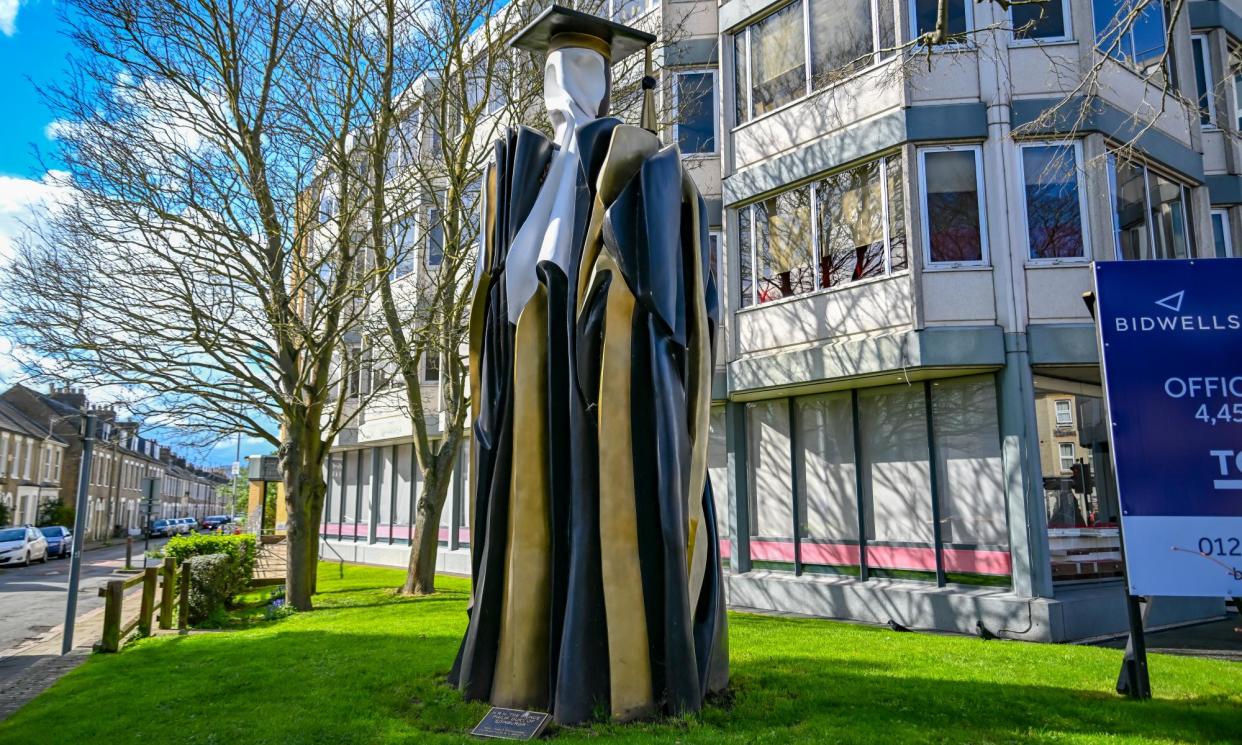Cambridge council orders removal of ‘poorest quality’ statue of Prince Philip

A faceless sculpture of Prince Philip, once described by a council planner as “possibly the poorest quality work” ever submitted, will be taken down years after it was erected without planning permission.
Standing outside a Cambridge office block, the 4-metre bronze statue depicted the late queen’s husband in academic robes with an abstract face resembling a twisted owl mask.
Called The Don, it was designed to commemorate his 35 years as chancellor of Cambridge University but its critical reception was savage, with one art critic describing it as “detritus masquerading as public art”.
The £150,000 work attracted so much controversy that no artist has admitted to making it. The Unex Group, which is understood to have commissioned the work, previously said it was by the Uruguayan sculptor Pablo Atchugarry, but this was denied by the artist, who said it was “an abuse” to suggest he made it.
Despite planning permission being turned down in 2014, it has been standing outside the Charter House office block in the city’s centre. Cambridge city council has issued an enforcement notice to the Unex Group, which owns the land, ordering it to remove it by August.
Katie Thornburrow, the executive councillor for planning, building control and infrastructure, wrote on her website of its imminent removal: “Nobody, apart from the wealthy property developer who commissioned it, seems to have a good word to say about it.”
She added: “I will be glad to see it gone, but remain angry that developers could just dump it in place and then force the council to spend officers’ time and money getting them to take it away. We deserve better.”
An enforcement notice issued by the Greater Cambridge shared planning service on 5 March said it appeared the sculpture had been erected within the last four years without planning permission. The notice said it had a “harmful material impact” on the appearance of the area and would have to be permanently removed within four months of 11 April unless an appeal was made beforehand.
Bill Gredley, the chair of Unex Group, defended the work in 2014 and described it as a “spectacular piece of art”. The Cambridge city council public art officer Nadine Black said at the time it was “possibly the poorest quality work that has ever been submitted to the council”.
She added: “It is not site-specific and is a work already purchased and has no relationship to this site. It is too large a scale for the context of the space it will be located within and will compromise the quality of the new development.”
Atchugarry said in 2014: “I am not the author of this sculpture, and it is an abuse that they had used my name. I wish somebody would apologise to me for this misunderstanding.”

 Yahoo News
Yahoo News 
